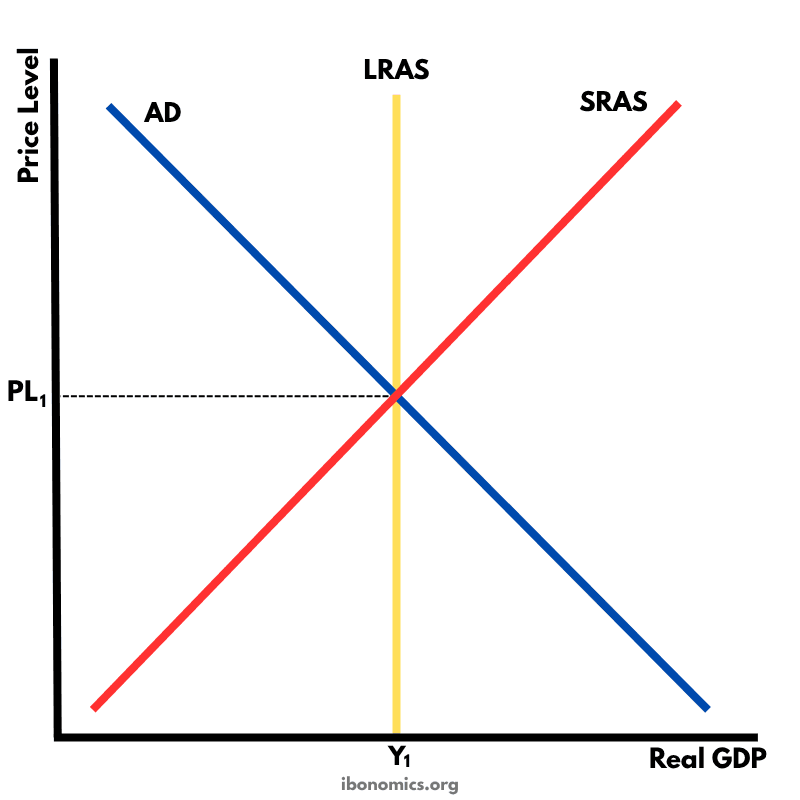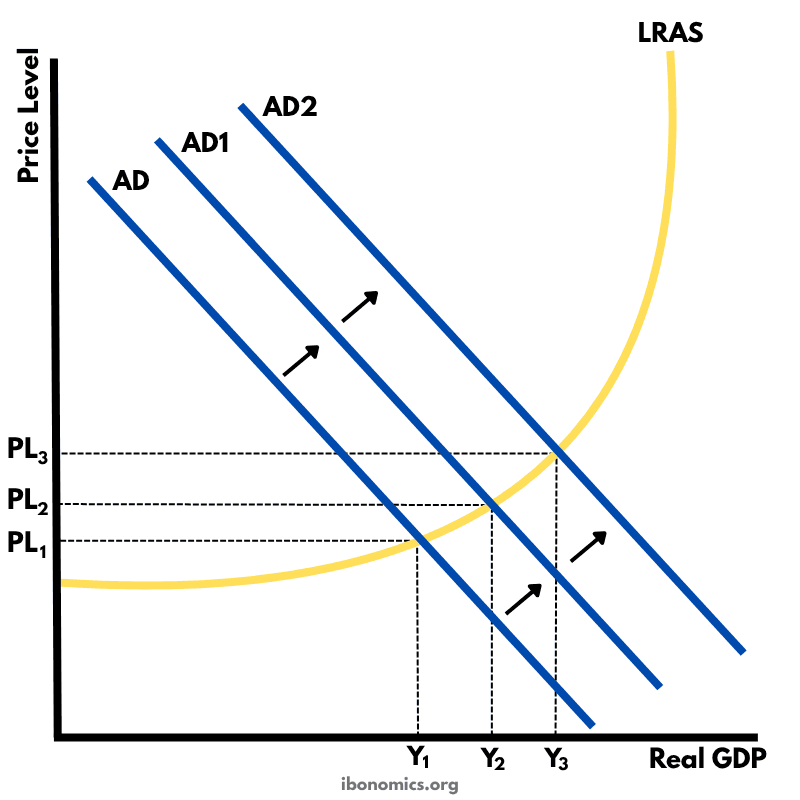Welcome to IBonomics! We are excited to launch and hope you find the website useful! Learn more about us here!
Welcome to IBonomics! We are excited to launch and hope you find the website useful! Learn more about us here!
A diagram showing the Classical model of aggregate demand (AD), short-run aggregate supply (SRAS), and long-run aggregate supply (LRAS), used to explain long-run macroeconomic equilibrium.

AD: Aggregate Demand, downward sloping due to the wealth effect, interest rate effect, and net exports effect.
SRAS: Short-run Aggregate Supply, upward sloping as firms increase output with higher prices.
LRAS: Long-run Aggregate Supply, vertical at full employment output, showing price level has no effect on long-run output.
PL1: The long-run equilibrium price level where AD intersects SRAS and LRAS.
Y1: Full employment level of output, also the long-run equilibrium level of real GDP.
In the Classical model, the long-run aggregate supply (LRAS) is vertical at the full employment level of output, Y1.
Aggregate demand (AD) slopes downward, showing the inverse relationship between price level and real GDP demanded.
Short-run aggregate supply (SRAS) slopes upward, indicating that firms increase output as prices rise in the short run.
The intersection of AD, SRAS, and LRAS represents long-run macroeconomic equilibrium, where actual output equals potential output.
This model is used to illustrate the effects of demand-side and supply-side policies in bringing the economy back to full employment in the long run.
Explore other diagrams from the same unit to deepen your understanding

A diagram illustrating the fluctuations in real GDP over time, including periods of boom, recession, peak, and trough, relative to the long-term trend of economic growth.

This diagram shows the intersection of the aggregate demand (AD) and short-run aggregate supply (AS) curves to determine the equilibrium price level and real GDP.

A Keynesian aggregate demand and long-run aggregate supply (AD–LRAS) diagram showing how real GDP and the price level interact across different phases of the economy, including spare capacity and full employment.

A diagram showing an output (deflationary) gap, where the economy is producing below its full employment level of output (Ye).

A macroeconomic PPC diagram illustrating the trade-off between producing consumer goods and capital goods, highlighting opportunity cost and future growth implications.

This diagram shows how an initial increase in aggregate demand leads to a multiplied increase in national output (real GDP) and price level within the Keynesian framework.